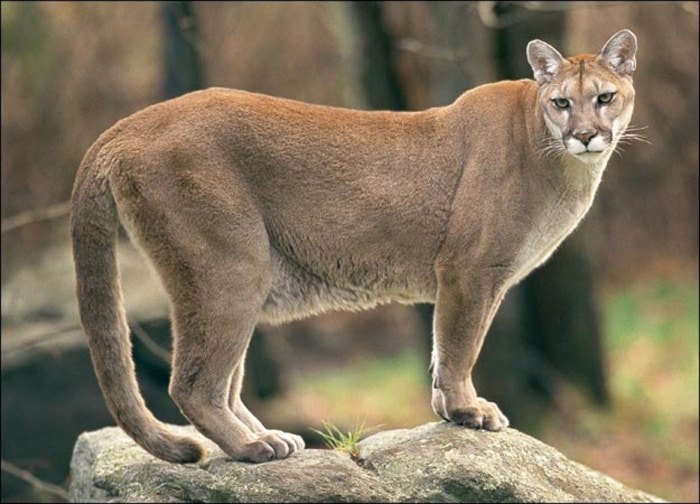Wildlife stirs many emotions in us from awe, compassion and often fear.
We should always treat them with great respect.
Each year as fall approaches many species are preparing to migrate to their winter breeding grounds. Others remain in our local areas year round and fall is the time for them to prepare their bodies for the hardships winter will bring.
Over the past few weeks there have been confirmed cougar sightings in the Comox Valley and this has resulted in local schools taking extra precautions to keep the students safe.
Cougars are usually elusive, solitary, mysterious creatures that often get a bad reputation for unprovoked attacks. Also known as mountain lions and pumas, they are Canada's largest wild cat.
They have sleek, muscular bodies and long tails which may represent one-third of their total body length.
Adult male cougars can weigh between 140 and 200 pounds; the smaller females weigh in between 90 and 120 pounds. The largest of these cats are found in the Interior of B.C.
Cougars need a territory covering 175 square acres for a large male; he will mark his boundaries with a scent from urination and feces. Females do not need such a wide area as they tend to stay close to their den.
Habitat for cougars includes open areas with nearby rocky outcrops or brush and treed areas where they can hide and stalk their prey.
Unfortunately, much of their preferred habitat is disappearing as areas are developed for commercial or residential use; in addition this expansion also provides a dwindling habitat for their favourite prey, the black tailed deer.
Proficient tree-climbers, cougars can jump 20 feet from a stationary position and jump down to the ground from a height of 60 feet. They use trees for a resting spot with a perfect view of potential prey.
Although their favourite food is deer, they will also snack on rabbits, beaver, raccoons and occasionally sheep or other young farm animals.
Cougars prefer to hunt at dusk and dawn, but they can roam around at any time of day and in any season, two-year-old cougars are more prevalent in spring, as they become independent and search for a place to adopt as their territory.
Cougar tracks are very visible in soft ground. Like all cats they are equipped with retractable claws, which are not visible in their footprint unlike dogs and bears that leave claw prints.
Cougars are definitely unpredictable and it is not clear what triggers an attack. They do seem attracted to small children whose high-pitched voices, small size and erratic movements may cause them to think they are prey.
Here are some safety recommendations from Environment Canada to lessen the chance of attack.
• Do not let your children walk alone in wooded areas or trails where cougars have been sighted.
• Supervise your children when playing outside and inform them how they should react if they encounter the cat.
• Do not feed deer or raccoons that may attract a cougar in your garden.
• Keep pets indoors and keep dogs on a leash when out walking.
• Never approach a cougar.
• Always provide the animal with an escape route.
• Stay calm and talk with a confident voice.
• Pick up small children and keep them calm.
• Do not run, back away slowly, sudden movement may trigger an attack.
• Do not turn your back on the animal and try to appear as big as possible.
• Carry a stick or throw rocks. People who fight back have survived cougar attacks.
Hopefully you will not encounter a cougar other than from a safe distance, which can be an awesome experience.
This is also the time that bears are preparing to hibernate and are out scouting for an easy meal.
Keep garbage secure and clean up fallen fruit from under trees. Carry sticks and or bell to alert the bears to your presence make as much noise as possible. Never turn your back or run away. Also avoid making eye contact with the animal, as this is perceived as threatening behaviour.
Report all sightings to the local Conservation Service at 1-877-952-7277.
To report injured wildlife or other wildlife advice, please call 250-337-2021 or visit www.wingtips.org.
Sandy Fairfield is the educational co-ordinator for the Mountainaire Avian Rescue Society (MARS). The MARS column appears every second Friday.



